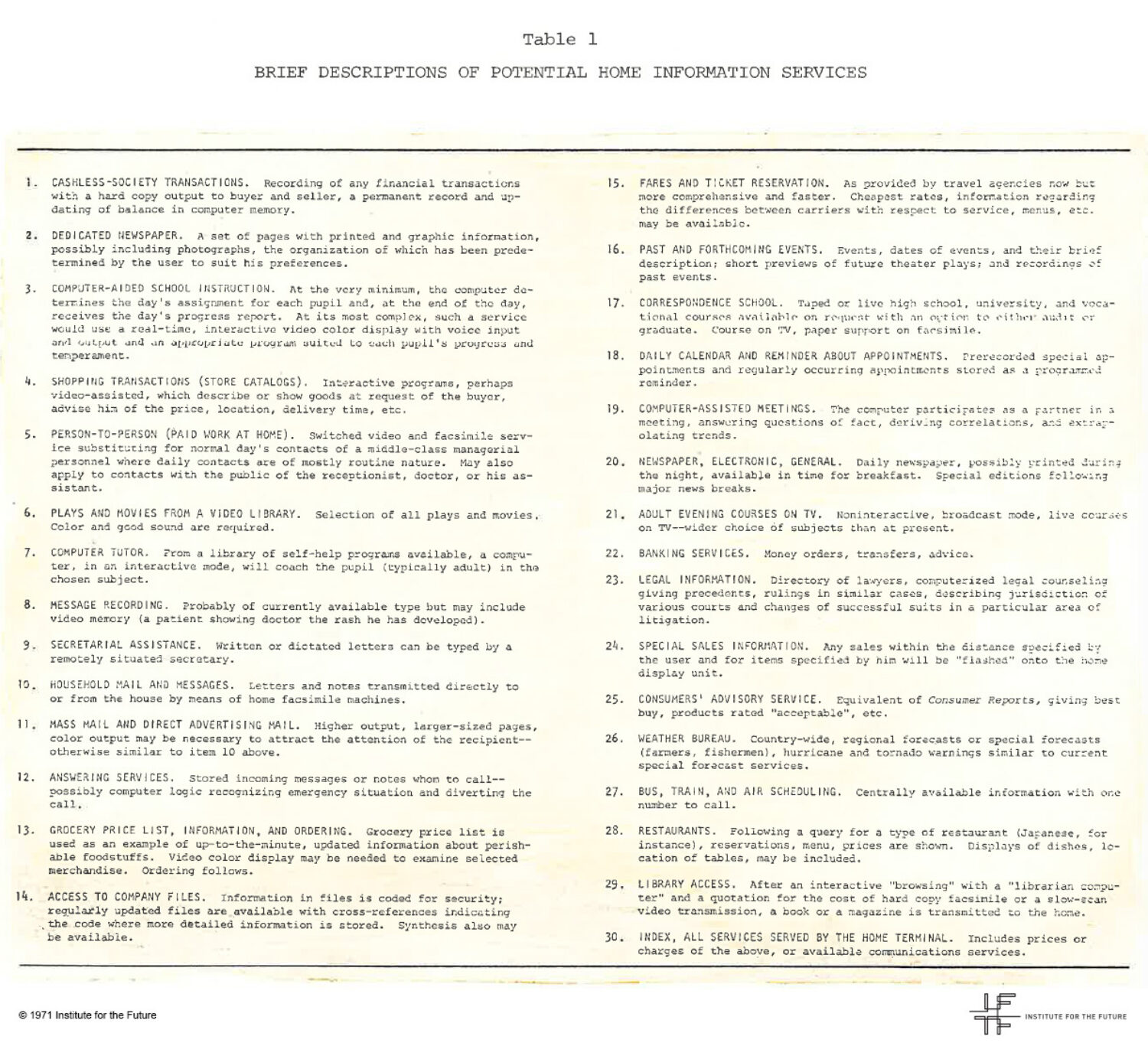Forecasting the Internet: IFTF Celebrates Paul Baran
Paul Baran brought one of the first projects to IFTF in 1971. It was based on a grant from ARPA, the Defense Department’s Advanced Research Projects Agency, to build a prototype of the Arpanet, the world's first working packet switching network and the core network of a set that came to compose the global Internet. From this project came a report titled, Toward a Study of Future Urban High-Capacity Telecommunications Systems, and included a handbook of forecasts for what was then called “broadband telecommunication and information services,” or, as we know it today, the Internet.
With the passing of Paul in 2011, one of IFTF's co-founders, we're releasing an excerpt of this report in tribute, entitled “Brief descriptions of potential home information services,” which has inspired more than 43 years of technology forecasting at IFTF and has spoken to countless audiences looking to connect and improve life using network technology.
The fact that Paul forecasted online shopping, news and banking in 1971 is amazing in itself, but also the sophisticated ways these services could be used—many of which only came to fruition in the last decade. What he describes in “dedicated newspaper” doesn’t look like the early New York Times website, as much as it looks like more recent news feed aggregators, like Google Reader, My Yahoo! or Feed Demon. The report contains not only a description of restaurant websites, but also Open Table-like reservation services. The report remains a true testament to Paul’s vision and foresight.
